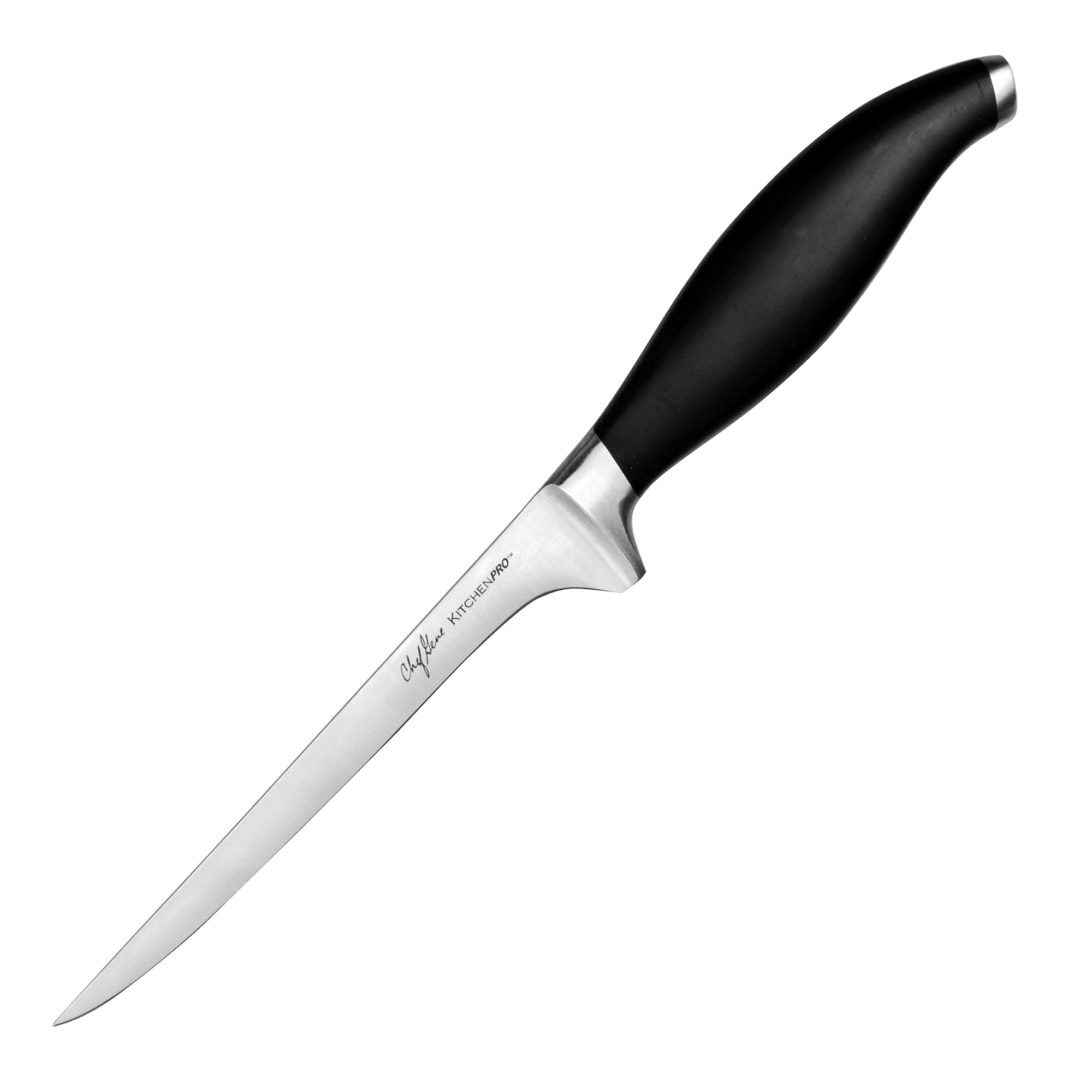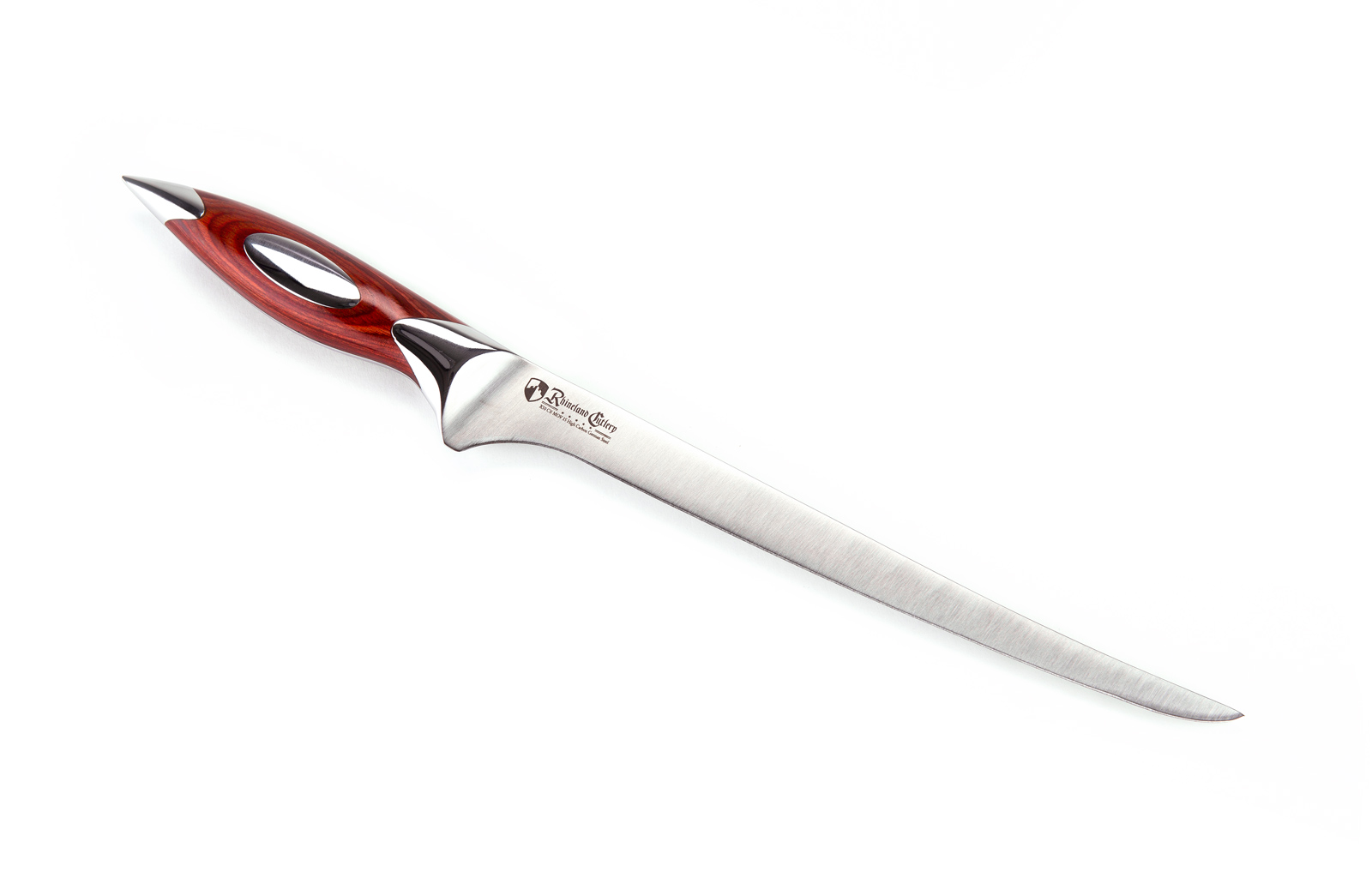The Art of Precision: Unveiling the Fillet Knife
A fillet knife is a specialized kitchen tool designed for precision cutting tasks, particularly for filleting fish and boning meat. It features a thin, flexible blade that allows for delicate, precise cuts around bones and joints. Fillet knives are versatile tools in the culinary world, making them essential for chefs, anglers, and anyone who enjoys preparing seafood and meat. With their sharp blades and ergonomic handles, fillet knives ensure minimal waste and maximum efficiency when working with delicate ingredients.
The Anatomy of a Fillet Knife.

In the world of culinary craftsmanship, the right tools can make all the difference. Among the most essential tools for any professional or home cook, the fillet knife stands out as a paragon of precision and versatility. This slender blade, designed with a specific purpose in mind, has earned its place as a kitchen essential. In this article, we will dive deep into the world of fillet knives, exploring their history, construction, uses, and maintenance to help you understand why this kitchen tool is an indispensable asset for anyone passionate about cooking.
The Evolution of the Fillet Knife
The history of the fillet knife is as intriguing as its design. Fillet knives can trace their origins back to ancient civilizations where various tools were used to separate meat from bone. These primitive tools evolved over time, eventually leading to the development of specialized knives designed specifically for filleting.
One of the earliest forms of the fillet knife can be seen in the Japanese Deba knife, which has a thick spine and a single-edged blade. This design allowed Japanese chefs to expertly fillet fish, a culinary tradition that continues to thrive today.
In Europe, the fillet knife took on a different form, with a thinner, more flexible blade. This design was particularly well-suited for filleting a wide range of meats, including fish, poultry, and beef. Over centuries, European knife makers refined the design, creating the modern fillet knife we know today.
Meaning of Fillet Knife
A fillet knife is a specialized kitchen knife designed for precise and delicate cutting tasks, particularly for filleting fish and boning meat. It is characterized by its thin, flexible blade, which allows for intricate, fine cuts, especially when working around bones and joints. Fillet knives are an essential tool for chefs, fishermen, and culinary enthusiasts who need to prepare seafood and meat with precision. They are designed to minimize waste and ensure maximum efficiency when handling delicate ingredients, making them a valuable addition to any kitchen arsenal.

The Anatomy of a Fillet Knife
A fillet knife's construction is a testament to the purpose it serves. Understanding its key components is essential for both beginners and seasoned chefs alike.
- Blade: The blade of a fillet knife is its defining feature. It is typically long and slender, ranging from 6 to 12 inches in length. The blade is designed to be thin and flexible, allowing it to glide smoothly along the contours of bones and achieve precise cuts. Fillet knife blades are commonly made from stainless steel or high-carbon steel, offering durability and resistance to corrosion.
- Handle: The handle of a fillet knife plays a crucial role in providing control and comfort during use. It is typically made from wood, plastic, or synthetic materials. The handle should have an ergonomic design that ensures a secure grip, even when the knife is wet or covered in slippery substances.
- Tang: The tang is the portion of the blade that extends into the handle. Full-tang fillet knives have a blade that runs the full length of the handle, providing excellent stability and balance. Partial-tang or rat-tail tang knives have a tang that extends partway into the handle, which may affect their overall strength and durability.
- Flexibility: The degree of flexibility in a fillet knife's blade can vary. More flexible blades are ideal for delicate tasks, such as filleting fish, while less flexible blades are better suited for tougher cuts, like removing the skin from poultry.

The Uses of a Fillet Knife
Fillet knives are renowned for their versatility and precision. Here are some of the key tasks they excel at:
- Filleting Fish: The primary purpose of a fillet knife is to fillet fish, making it an indispensable tool for anglers and seafood lovers. Its thin, flexible blade can easily separate the flesh from the bones, leaving minimal waste.
- Boning Meat: Fillet knives are also adept at boning various types of meat, such as chicken, turkey, and beef. The thin blade can navigate around bones and joints with ease, ensuring you extract as much meat as possible.
- Trimming Fat: When precision matters, fillet knives shine in trimming excess fat from cuts of meat. The thin blade allows for meticulous fat removal without compromising the meat's integrity.
- Slicing Delicate Ingredients: Fillet knives are excellent for slicing delicate ingredients like smoked salmon, prosciutto, or thinly shaved vegetables. Their precision ensures paper-thin slices with minimal effort.
- Deveining Shrimp: The fine tip of a fillet knife is perfect for deveining shrimp. It allows you to make a clean, shallow incision along the shrimp's back, removing the intestinal tract while leaving the flesh intact.
- Peeling Fruit: In a pinch, fillet knives can be used to peel fruits like apples or pears. The sharp, precise blade makes quick work of removing skin while minimizing waste.
Maintenance and Care
To ensure your fillet knife remains a reliable kitchen companion, proper maintenance and care are essential:
- Hand Washing: Always wash your fillet knife by hand with warm, soapy water immediately after use. Avoid putting it in the dishwasher, as the high water pressure and harsh detergents can damage the blade and handle.
- Drying: After washing, dry the knife thoroughly with a clean, dry towel. Moisture can lead to rust and corrosion, so be sure to remove any lingering water.
- Sharpening: Regularly sharpen your fillet knife using a sharpening stone or honing rod. A sharp blade not only enhances precision but also reduces the risk of accidents due to slipping.
- Storage: Store your fillet knife in a knife block, magnetic strip, or blade guard to protect both the blade and your fingers. Avoid tossing it into a drawer with other utensils, as this can lead to blade damage.
The fillet knife, with its rich history and exceptional design, is a kitchen tool that every chef, amateur or professional, should have in their culinary arsenal. Its precision, versatility, and ability to make delicate cuts set it apart from other knives. Whether you're filleting fish, deboning meat, or slicing delicate ingredients, a fillet knife's exceptional craftsmanship ensures you achieve culinary perfection. With proper care and maintenance, your fillet knife can remain a faithful companion in your culinary adventures, elevating your cooking to new heights of precision and artistry.



